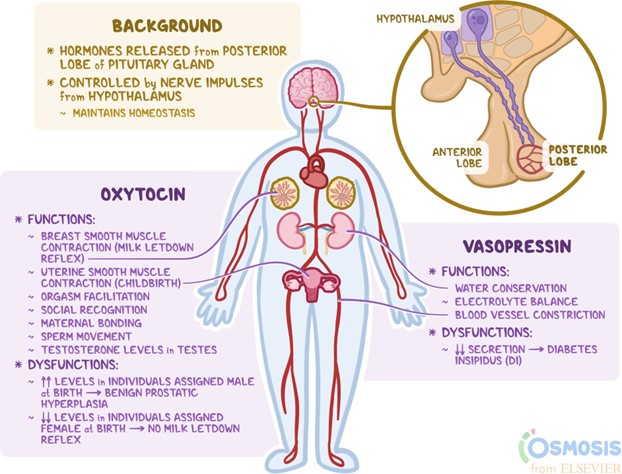Which of the following are agranulocytes?
Basophils.
Monocytes.
Neutrophils.
Eosinophils.
The Correct Answer is B
Monocytes are a type of agranulocytes, which are white blood cells that lack visible granules in their cytoplasm.
Agranulocytes also include lymphocytes, which are involved in adaptive immunity.
Choice A is wrong because basophils are a type of granulocytes, which are white blood cells that have granules in their cytoplasm.
Granulocytes also include neutrophils and eosinophils, which are involved in innate immunity.
Choice C is wrong because neutrophils are also a type of granulocyte.
Neutrophils are the most abundant white blood cells and are responsible for phagocytizing bacteria and fungi.
Choice D is wrong because eosinophils are also a type of granulocytes. Eosinophils are involved in allergic reactions and parasitic infections.
Normal ranges for white blood cells vary depending on age, gender, and health status, but generally, they are between 4,000 and 11,000 cells per microliter of blood.
Nursing Test Bank
Naxlex Comprehensive Predictor Exams
Related Questions
Correct Answer is B
Explanation
Hormones that the posterior pituitary secretes are synthesized in the hypothalamus.

They are made by neurons in the hypothalamus and stored and released by the posterior lobe of the pituitary gland, a small organ at the base of the brain.
They regulate water balance, blood pressure, and uterine contraction in the body.
Choice A is wrong because the anterior pituitary synthesizes its own hormones, such as growth hormone, thyroid-stimulating hormone, and prolactin.
Choice C is wrong because the thalamus is not involved in hormone synthesis or secretion. It is a part of the brain that relays sensory and motor signals to the cerebral cortex.
Choice D is wrong because the posterior pituitary does not synthesize hormones. It only stores and releases hormones made by the hypothalamus.
Correct Answer is A
Explanation
The antibodies produced in allergic reactions belong to the immunoglobulin E group.
These antibodies bind to an allergen, triggering a release of histamine, which causes allergy symptoms.
They also help to fight parasitic infections.
Choice B is wrong because allergens are not antibodies, but substances that cause an allergic reaction.
Choice C is wrong because the antibodies that belong to the immunoglobulin G group are not involved in allergic reactions, but in fighting bacterial and viral infections.
Choice D is wrong because mast cells are not antibodies, but cells that release histamine and other chemicals when activated by IgE antibodies.
Whether you are a student looking to ace your exams or a practicing nurse seeking to enhance your expertise , our nursing education contents will empower you with the confidence and competence to make a difference in the lives of patients and become a respected leader in the healthcare field.
Visit Naxlex, invest in your future and unlock endless possibilities with our unparalleled nursing education contents today
Report Wrong Answer on the Current Question
Do you disagree with the answer? If yes, what is your expected answer? Explain.
Kindly be descriptive with the issue you are facing.
